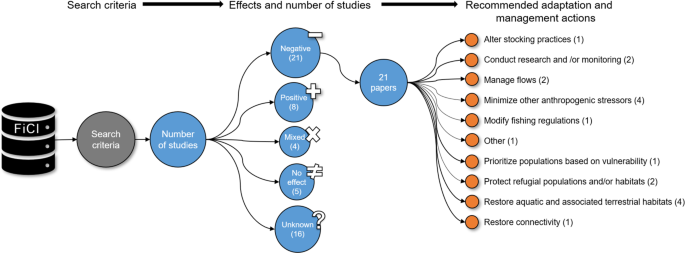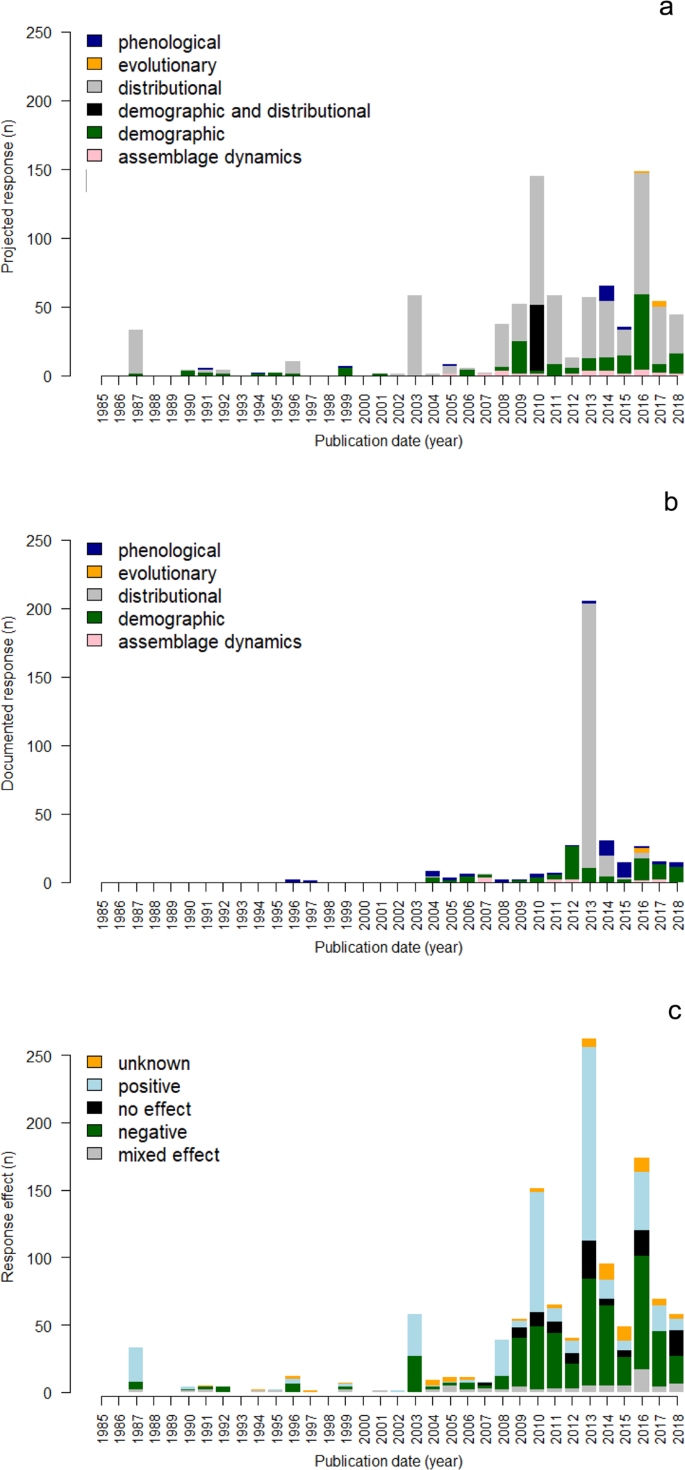Freshwater fishes have important subsistence, cultural, and economic value worldwide (Lynch et al.)1. However, freshwater ecosystems are among the most threatened on the planet with freshwater fishes showing the highest extinction rate among vertebrates in the 20th century (Burkhead 2012)2. The key anthropogenic pressures facing freshwater ecosystems are water extraction, habitat degradation, overexploitation, invasive species, and climate change (Reid et al.)3. These pressures occur at local, regional, and global scales and can have broad impacts on the life history, demography, and distribution of freshwater fishes (Costello 2015, Arthington et al.)4,5. In many cases freshwater fishes are limited in their ability to shift their distributions in response to climate change, increasing the vulnerability of many populations relative to marine fishes or terrestrial species. The value of inland freshwater fisheries has also been overshadowed by the magnitude of marine fisheries, but recent studies are revealing the value of these fisheries worldwide (Lynch et al.)1.
Systematic literature reviews in aquatic ecology provide information on large scale trends in ecosystem change, broader impacts of effects across diverse taxa and geographic location, and are especially important in management and policy-making (Haddaway et al.)6. While meta-analyses presented in these review papers are useful, extracting the underlying data from primary studies may be difficult because the database of original papers and information contained in the review paper are not readily accessible. Such reviews on the impacts of climate change on inland fishes have revealed increasing documentation of the effects of changes in temperature, precipitation, and other climate variables on fishes, but the effects are often interacting and complex. As a result, it can be difficult to capture all the dynamics and nuances in a single review paper (Comte et al., Lynch et al., Kovach et al., Myers et al.)7,8,9,10.
The creation of the Fish and Climate Change database (FiCli; pronounced fick-lee) draws from our personal attempts to systematically interpret information on climate change effects on inland fishes. We found little standardized information with which to evaluate responses across taxa, functional groups, and geographic regions. Therefore, we extracted and synthesized data from individual studies using a consistent format as a means to allow users to quantitatively assess broader relationships and make inferences, particularly for understudied species and regions. Potential adaptation or management actions have also been incorporated into the database when available. One of the major assets of FiCli is the built-in flexibility to add new studies. As these studies are integrated, our confidence in the responses, relationships, and metrics will increase and strengthen the ability of this resource to inform science-based management and adaptation planning.
The goal for the FiCli database is to inform the development of conservation, management, and climate adaptation plans for inland fishes that integrate and prioritize scientific, logistical, financial, or regulatory actions when appropriate. The FiCli database was created using an established systematic literature review process with predefined inclusion criteria and multiple rounds of review and data extraction by fisheries experts (Myers et al.)10. With at least 15,000 freshwater fish species and 170 taxonomic families identified worldwide (Lévêque et al.)11, there remain significant geographic, taxonomic, and biological gaps in our understanding of climate change effects on freshwater fishes globally (Myers et al.)10. The FiCli database currently includes information for 53 freshwater fish families, 232 studies from over 47 countries, and 851 projected and 377 documented responses of individual species or assemblages to climate change. Each entry in the FiCli database includes the species studied, location, thermal guild classification, biotic metric studied, and direction of biotic metric response (Fig. 1). The database can be queried to assess the vulnerability of species to climate change given changes in their evolution, demography, distribution, assemblage dynamics, or phenology, and to identify adaptation and management actions that are recommended in the scientific literature to address those impacts (Figs. 2 and 3). Users can also summarize whether the documented or projected fish responses to climate change could have a positive, negative, mixed, or unknown benefit to the species, population, or assemblage (Fig. 3). This unique synthesis currently comprises projected and documented studies between 1985 and 2018 and can serve to focus species, population, assemblage, or ecosystem research priorities because different filters can be applied to identify knowledge gaps. Informed predictions about climate change effects for under- or unrepresented species can then be generated using projections and observations among conspecifics or surrogate species or ecosystems. The FiCli is a living database that will be updated by its curators as new studies are published, and users also have the opportunity to inform curators of peer-reviewed publications that should be considered for addition to the database.

Graphical user interface for Fish and Climate Change (FiCli) database. Filters are described in the Data Records section.

An example of graphical output available from a FiCli database query. Here the database was filtered for documented effects of climate change on coldwater salmonids and recommended adaptation actions. This graphical output is available to users following a specified search via the “Summary of Filtered Datatable” tab.

Published effects of climate change on inland fishes over time, split across response categories. (a) Projected responses, (b) Documented responses, (c) Responses illustrating no effect or a positive, negative, mixed, or unknown benefit of the response.
Source: Resources - nature.com


